Tovur
New Member
Posts: 1 
|
Post by Tovur on Apr 18, 2017 22:52:59 GMT

The main job of the Medics is to heal those injured in the pack. Any member who happens to get injured or ill, or to help care for pups or pregnant females, it's their job to tend to them. Medics should know all herbs and how they're used correctly, as well as how to heal specific wounds - the best form of care. With this rank you're required to be dedicated and willing, as well as friendly to your patients. Knowledge and dedication is extremely important for a Medic, they're the 'Doctors' of the pack, and therefore a great duty of care rests on their paws.
However, their only job isn't to heal. Medics are advised to train any forms of training session; whether it be mental or physical - all forms of training will do them well. Sparring is advised also, to help Medics grasp the concept of how to defend themselves, which they may need any time throughout their life.
|
|
|
|
Post by Emilia on Apr 30, 2017 1:32:19 GMT

Curer
SCu I >> III
Basic of the medic branch in general. Here you will learn the basic herbs and tools of trade you will need to complete your job of choice. You may also attend heals at this time as well to get a feel for things and how things are done. At this rank you may assist higher ranked medics within the branch and also gather said herbs and tools for the pack.
Minder
SM IV >> X
The Minders focuses more on the care of pups and helping out pregnant mothers. They'll act as midwives and help females whilst they're pregnant; as well as giving them regular check-ups and helping with the birth. They'll also help care for the children, like babysitters. They'll tell them stories, play games with them - generally keep them entertained and safe.
Or
Oculist
SOc IV >> VIII
The Oculists are the ones who focus more so on healing rather than taking care of pups. They'll need a greater knowledge of healing as not only will they need to deal with minor wounds such as bruises, scraped and such, they'll also need to deal with assisting higher ranks with dislocations, breaks - and amputations.
Shaman
SX IX >> X
The higher ranked Oculists. These wolves deal with the dislocations, breaks, amputations, and near death experiences. They can assist with leading into the after life. They may break the bad news to their patients if it requires. Shamans may also deal with the lower tiered jobs if no others are available. They may also supervise heals of those who are not confident enough.
Rit Zien
RZ I or Rit Zien
The Rit Zienis responsible for the entirety of the medic branch. They will oversee the progress of those within the branch and provide guidance to those below them. They do not think of themselves as superiors. It will be their job to help train up the lower tiered medics and answer any questions given to them. Those who are not able to be saved will often times be put down with or soothed to death (With character owners permission of course). These wolves are the only ones able to perform said duties.
© Tovur
|
|
|
|
Post by Emilia on Apr 30, 2017 1:48:39 GMT

Banana Leaf - Rather large green leaf that can be found in tropical areas. Can be used for bandages.
Burdock Leaf - Great for holding moisture and heat; also bandage material.
Burdock Root - applied to bites and helps cure infection.
Vines - Used to tie together bandages.
Bowl Shaped Stone - Rather heavy but you can use these to store and transport water.
Bark - Used for transportation but must be discarded after use as it does absorb moisture.
Coconut Shells - Light weight and good for storage!
Sharp Stone(Flat)- Can be used to cut apart things such as herbs and leaves. You can also use your claws.
Tree Sap - Can be used to secure a leaf in place for healing when it isn't possible to use vines.
Water Therapy - Having one with weak or hurting bone or muscle walk/ paddle in shallow water.
Water Soaking - Hold swelling wounds in cold water, soothes scraped pads and takes down swelling.
Rosemary or Mint - Used to lighten the stench of death.
Moss Soaked in Water - Can help sick, injured or weak cats drink, or used to cool fever; helpful for pups.
NO COBWEBS. They don't hold anything and they do fall apart easily.
Basic Herbs:
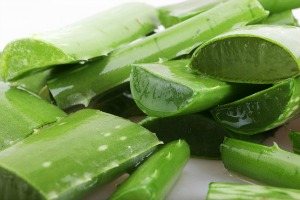 Aloe Vera; Aloe Vera;
A remedy for skin conditions, including burns, sunburn, frostbite, psoriasis and cold sores, but there is a host of other aloe vera benefits. Aloe gel is used for treating osteoarthritis, bowel diseases, fever, itching and inflammation. It can also be used to mix with water for more of a deep clean.
To use: Cut the stem with either your claw or a flat stone and squeeze the liquid into storage of choice.
 Yarrow; Yarrow;
(Achillea millefolium)
This strongly scented flower has traditionally been used as a poultice applied to stop bleeding. An herbal tea brewed from dried flowering plant has also been used to treat colds, fevers, indigestion, gastric inflammations and internal bleeding. Expectorant, analgesic, and sweat-inducing properties that may be useful for treating colds and flu. Do not take in large amounts or for long periods of time as the compound thujone is present in small amounts and is toxic. Can and often is mixed with Golden rod.
To use: Just pluck the leaves. Let the leaves dry out over time or use them fresh.
 Goldenrod; Goldenrod;
Goldenrod is used to reduce pain and swelling (inflammation), as a diuretic to increase urine flow, and to stop muscle spasms. It is also used for gout, joint pain (rheumatism), arthritis, as well as eczema and other skin conditions. Goldenrod is also used to treat tuberculosis infections that have become active again after a period of inactivity (latency), diabetes, enlargement of the liver, haemorrhoids, internal bleeding, hay fever, asthma, and an enlarged prostate.
Some use goldenrod as "irrigation therapy." This is a procedure that involves taking goldenrod with lots of fluids to increase urine flow in an effort to treat inflammatory diseases of the lower urinary tract, as well as stones in the kidney or urinary tract.
Can be used topically or internally. Usually mixed with Yarrow to prevent wound infection.
To use: Strip the stem of its flowers. Generally the same procedure as Yarrow. Wild Bergamot; Wild Bergamot;
Historically, the leaves were used to brew tea used to treat colic, colds, fevers, stomachaches, insomnia, and internal parasites. Contains antioxidant compound carvacrol with anaesthetic, worm-expelling, and anti-inflammatory properties.
To use: Dry the leaves in small bundles.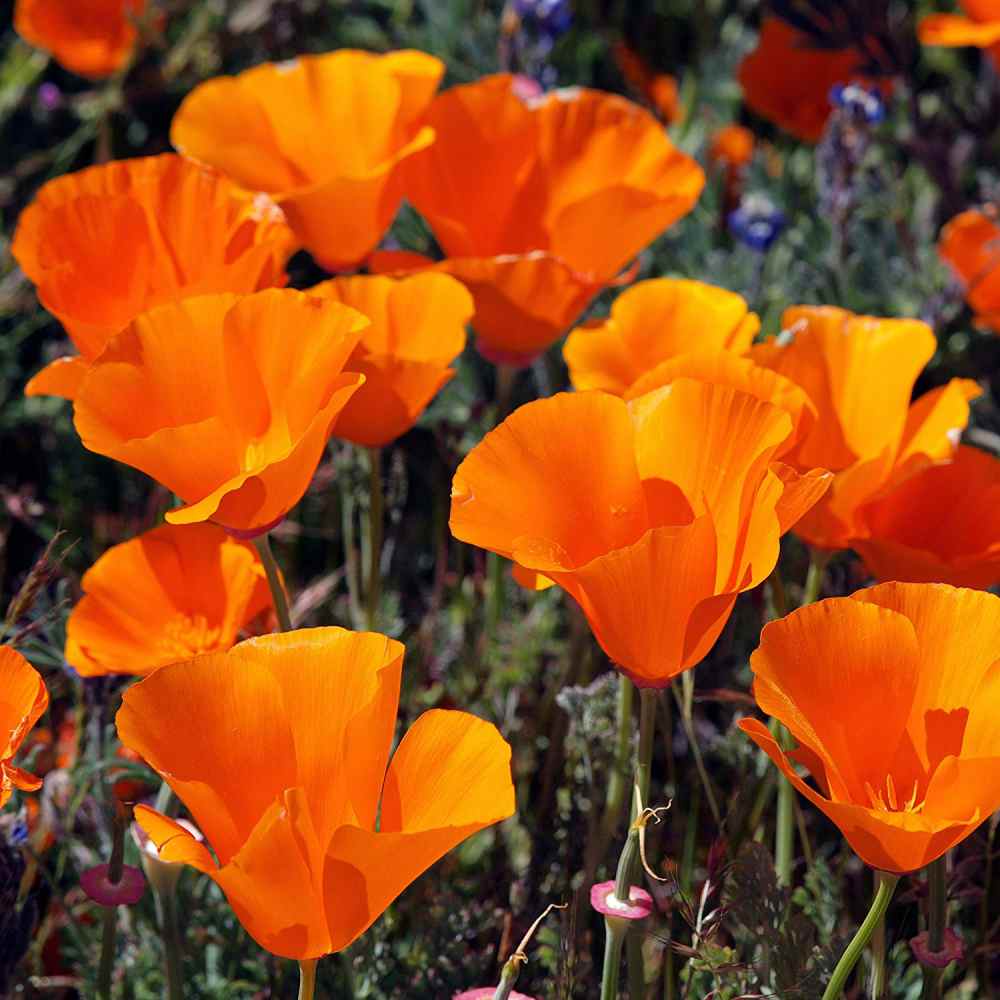 California Poppy; California Poppy;
This can be used to aid anxiety and insomnia. Often times than not its used as a muscle relaxer or pain reliever. Pups get no more than 1 of these while adults get no more than 3-4.
To use: Extract the seeds. However the flowers can be used dried out as well.
 Marshmallow Root; Marshmallow Root;
soothe and moisten mucous membranes of the respiratory, digestive, and urinary tracts, and also as an external soothing poultice for wounds and burns. Helps sore throats in other words.
To use: Leaves, Roots, & Flowers are all edible. The dried leaf or root made into a tea. The root is best as a cold infusion or a dejection. This enables the extraction of mucilage. Leaf or root as a poultice.
![]() ![]() 
Passion Flower;
This plant can be used as a powder, a paste or as it is. It's another herb which is used to act as pain relief, but it can also help with treating sleep disorders, insomnia, hysteria and nervous exhaustion.
To Use; Give them the petal to eat. Half a petal for a small wolf and a full petal for a large wolf - should never be given to patients below 6-8 months.

Ginger;
The root has many uses, the main one being to treat inflammation, but it's also used to help arthritis, muscle pain, respiratory and lower back pain.
To Use; Cut off a small amount of the root and grind it up.

Honey;
Suitable for helping with sore throats, dry coughs and helps mask the taste of bitter or unappealing herbs. It can also be used as an antibiotic. Vines cannot always be used to hold bandages in place; specifically when they need to be placed on the face or neck, and therefore honey can be used.
To Use; Don't use it excessively, but can be fed directly, or applied directly.
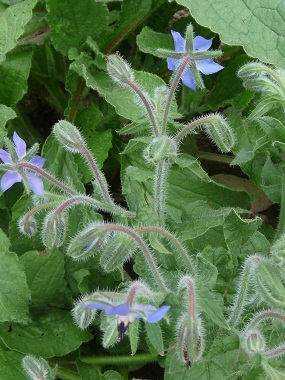 Borage Leaves; Borage Leaves;
A blue and pink star-shaped flower, the leaves appear to be hairy. Used to bring down fevers, but also increases the amount of milk produces from females.
To Use; They can be fed directly.
 Chervil; Chervil;
A sweet-smelling plant that had large fern-like leaves, with small white flowers. The leaves help the process of curing an infection, whereas the roots help stomach ache.
To Use; Leaves can be applied to wounds, the roots can be taken directly.
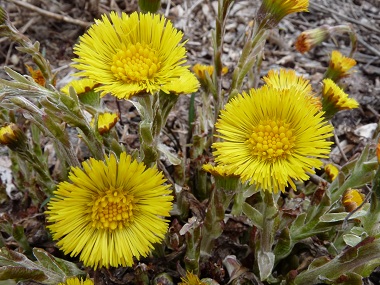 Coltsfoot; Coltsfoot;
A flower which looks similar to dandelion, though the flower can be either yellow or white. This plant helps with shortness of breath.
To Use; Can be given directly.
 Comfrey; Comfrey;
Large leave, with small bell-shaped flowers that can be purple, pink or white. This plant helps soothes wounds and helps mend broken bones.
To Use; The roots are chewed.
Intermediate Herbs; Birthroot; Birthroot;
Birthroot, Trillium erectum, is a North American herb with tiny, dark red flowers. Traditional healers use the roots and rhizomes to treat haemorrhage, excessive menstrual bleeding and bowel problems. The plant is high in tannins and saponins and has anti-inflammatory and anti-hemorrhagic actions. Hershoff and Rotelli state that birthroot is useful for internal bleeding from fibroid, menopausal bleeding and uterine prolapse. Do not use this herb during pregnancy. A decoction made from the root of Birthroot is used to reduce bronchial conditions, bloody coughs, common coughs, lung weakness, and diarrhoea
Native to east and northeast North America this perennial blooms in the spring. The stem grows 10 to 15 inches tall with leaves at the top of the stem. The three petal flower grows on the top of the stem in the spring and early summer in colours ranging from pale yellow to deep red. The root is bulbous and used to treat many ailments.
To use: Combination of roots leaves and flowers into a mixture. Can be taken internally.
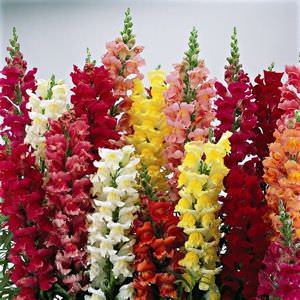 Snapdragon; Snapdragon;
The leaves and flowers are antiphlogistic, bitter, re-solvent and stimulant. They have been employed in poultices on tumours and ulcers. It is effective in the treatment of all kinds of inflammation. The plant is harvested in the summer when in flower and is dried for later use. This herb can treat wounds on the edge of infection.
To use: Crush the herb into a fine like powder and apply directly. External uses only.

Turmeric;
Turmeric is used for arthritis, heartburn, joint pain, stomach pain, Crohn's disease and ulcerative colitis, bypass surgery, haemorrhage, diarrhoea, intestinal gas, stomach bloating, loss of appetite, jaundice, liver problems, Helicobacter pylori infection, stomach ulcers, irritable bowel syndrome (IBS), gallbladder disorders, high cholesterol, a skin condition called lichen planus, skin inflammation from radiation treatment, and fatigue.
It is also used for headaches, bronchitis, colds, lung infections, fibromyalgia, leprosy, fever, menstrual problems, itchy skin, recovery after surgery, and cancers. Other uses include depression, Alzheimer's disease, swelling in the middle layer of the eye (anterior uveitis), diabetes, water retention, worms, an autoimmune disease called systemic lupus erythematosus, tuberculosis, urinary bladder inflammation, and kidney problems.
Some apply turmeric to the skin for pain, ringworm, sprains and swellings, bruising, leech bites, eye infections, acne, inflammatory skin conditions and skin sores, soreness inside of the mouth, infected wounds, and gum disease.
To use: Grind roots to a powder. Can be taken internally or topically for swelling and bruising.
|
|



















